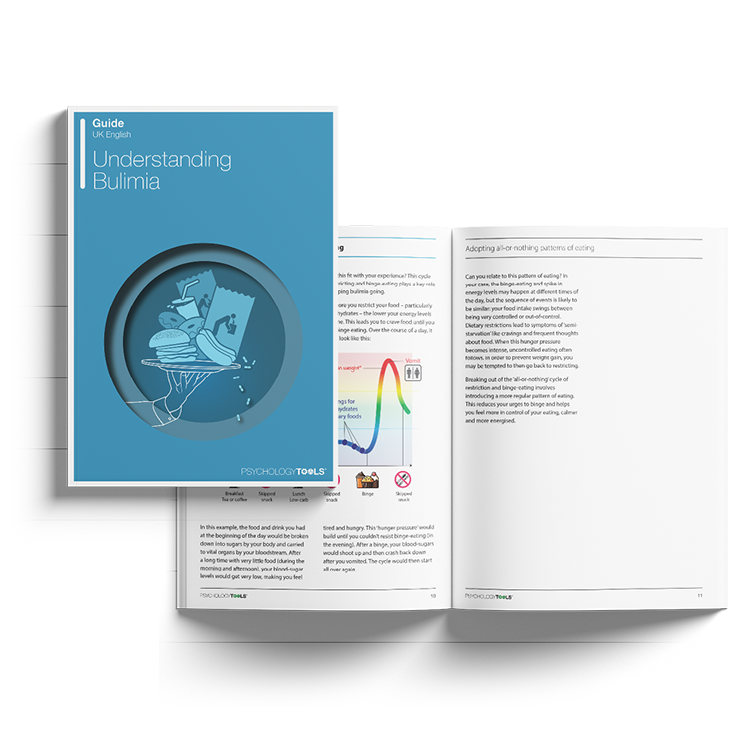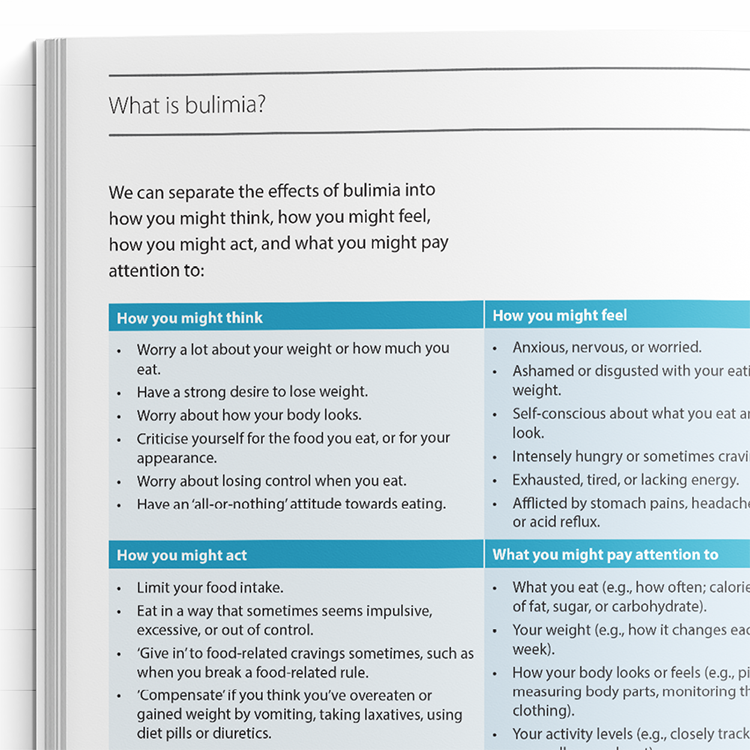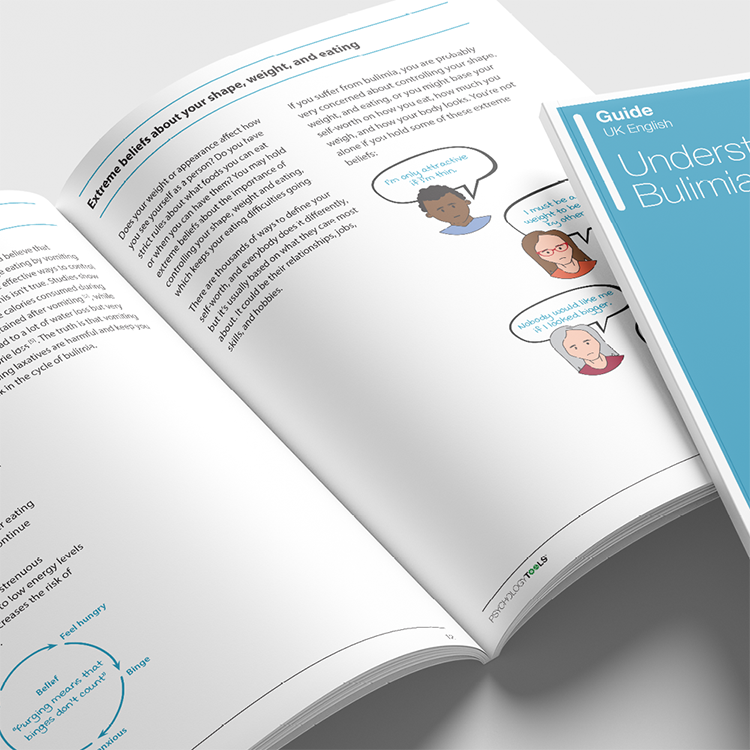Guide (PDF)
A psychoeducational guide. Typically containing elements of skills development.
An accessible and informative guide to understanding bulimia nervosa (BN), written specifically for clients.

A psychoeducational guide. Typically containing elements of skills development.
To use this feature you must be signed in to an active account on the Advanced or Complete plans.

Our ‘Understanding…’ series is a collection of psychoeducation guides for common mental health conditions. Friendly and explanatory, they are comprehensive sources of information for your clients. Concepts are explained in an easily digestible way, with plenty of case examples and accessible diagrams. Understanding Bulimia is designed to help clients with bulimia nervosa to understand more about their condition.
This guide aims to help clients learn more about bulimia nervosa (BN). It explains what BN is, what the common symptoms are, and effective ways to address it, such as cognitive behavioral therapy (CBT).
For individuals who experience episodes of binge eating followed by compensatory behaviors such as vomiting, fasting, or excessive exercise.
Identify clients who may be experiencing bulimia nervosa (BN).
Provide the guide to clients who could benefit from it.
Use the content to inform clients about BN and help normalize their experiences.
Discuss the client’s personal experience with BN.
Plan treatment with the client or direct them to other sources of help and support.
Many people go through periods where their eating patterns change, but if these episodes become out of extreme, distressing, or frequent, they may indicate bulimia nervosa (BN). BN is an eating disorder characterised by episodes of binge-eating (consuming large amounts of food in an uncontrolled way) followed by compensatory behaviours, such as vomiting or using laxatives, to prevent weight gain. Around 3 in every 100 women and 1 in every 100 men will develop bulimia at some point in their lives (van Eeden et al., 2021). Fortunately, psychological treatments - particularly cognitive behavioral therapy (CBT) - have been shown to be highly effective in treating BN.

Just enter your name and email address, and we'll send you Understanding Bulimia (English US) straight to your inbox. You'll also receive occasional product update emails wth evidence-based tools, clinical resources, and the latest psychological research.
Working...
This site uses strictly necessary cookies to function. We do not use cookies for analytics, marketing, or tracking purposes. By clicking “OK”, you agree to the use of these essential cookies. Read our Cookie Policy